The First Generation of AI PCs: A Product of High Computing Power Acceleration. Is AI the Lifesaver for PCs?
-
In the recently concluded Q3 2023, PC shipments continued their downward trend.
IDC statistics indicate that global PC shipments declined by 7.6% in that quarter.
However, IDC suggests that the PC market may soon hit bottom and rebound.
This conclusion is primarily based on data—PC shipments have shown growth over the past two quarters, and the year-on-year decline rate has been slowing.
Additionally, a new variable is affecting IDC's judgment—this variable is AI PC.
"The emergence of AI PC will accelerate the arrival of a device replacement wave."
This is a core viewpoint from the AI PC Industry (China) White Paper jointly released by IDC and Lenovo.
This perspective has appeared in almost all PC industry research reports this year and is also a key derivative of the mantra proclaimed by major internet giants this year: "All products are worth redoing with large models."
For PC manufacturers, they have been waiting for such an opportunity for a long time.
From 2011 to 2018, the global PC market struggled with eight consecutive years of negative growth. Now, in Q3 2023, it marks the eighth consecutive quarter of the global PC market struggling in the vicious cycle of negative growth.
In this year when various industries are frantically leveraging large models, can AI PC become the turning point for the PC industry to break free from the downward curse?
This is an intriguing "mystery" worth anticipating.
To build an AI PC, the first question to answer is—what is an AI PC?
This leads us to the story of the AI chip war.
Over the past decade, Nvidia, widely recognized as the leader in AI chips, has almost monopolized the rapidly growing AI empire.
As a result, Nvidia's market value has skyrocketed—from billions to trillions of dollars.
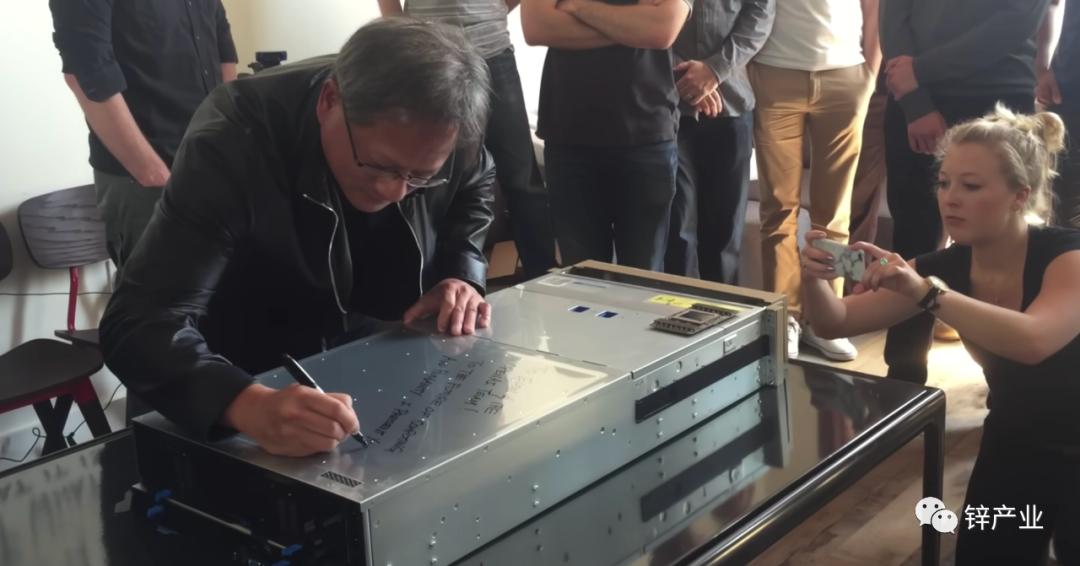
This once young 'little brother' in the eyes of Intel and AMD has now become a formidable opponent that neither can ignore.
Equally impossible to ignore is a new computing era named AI.
Especially in 2023, the frenzy formed by the new AI paradigm has made AI enthusiasts believe—every product is worth redoing with large models.
Silicon Valley investors have set AI as the minimum investment standard, while OpenAI scientists and entrepreneurs are staging an annual power struggle drama. Zhou Hongyi, dubbed the "honest man," even revealed that someone approached him to develop a pig farming large model, stating, "Everyone (this year) has unrealistic worship for large models."
Thus, the PC industry, awaiting redemption, has also turned its gaze toward large models, giving rise to the quiet emergence of AI PCs.
According to Counterpoint research data, the top five global PC shipment brands in Q3 2023 were Lenovo, HP, Dell, Apple, and Asus.
Except for HP, the other four major PC manufacturers experienced varying degrees of shipment declines.
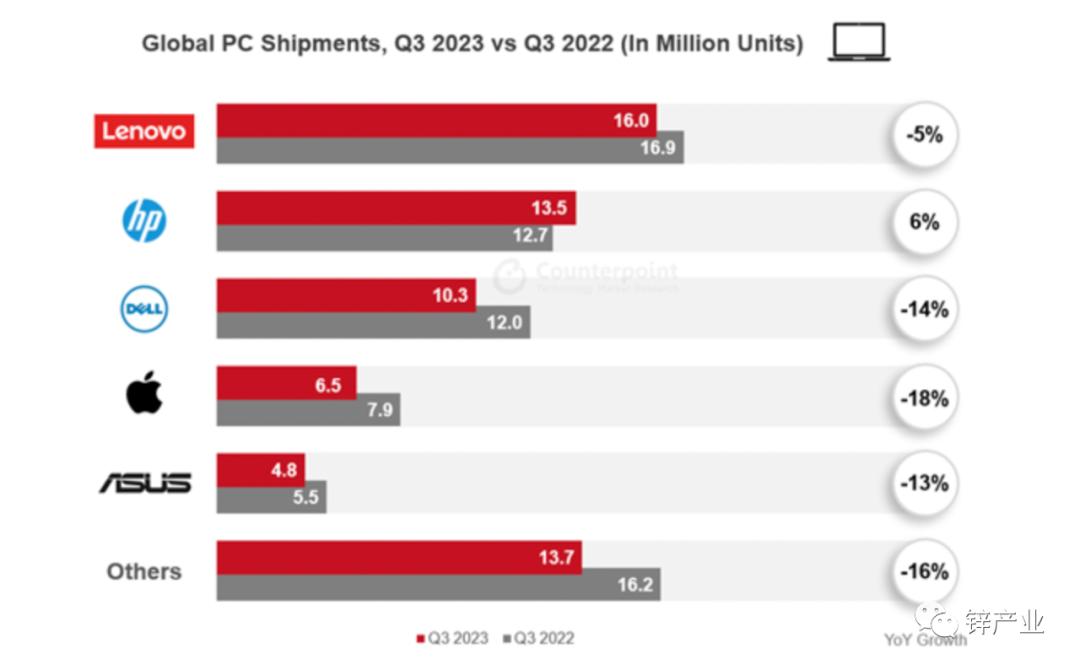
The downturn in the PC industry has become the norm, making such declines unsurprising.
In Counterpoint's statistical report, what's more noteworthy is that it also provided the following prediction based on market development trends over the past few years:
By 2026, AI-enabled PCs will account for over 50% of the market share.
Meanwhile, another market research firm, Canalys, recently provided similar forecast data:
It is projected that in 2024, AI-enabled PCs will occupy approximately 19% of the market share.
By 2027, AI-enabled PCs are expected to reach 60% market penetration.
Of course, the real force driving AI PCs into the mainstream isn't research institutions, but the age-old 'Wintel Alliance'.
In September 2023, Intel CEO Pat Gelsinger told a new story about 'Siliconomy' at the Technology Innovation Summit, where AI PCs played a crucial chapter.
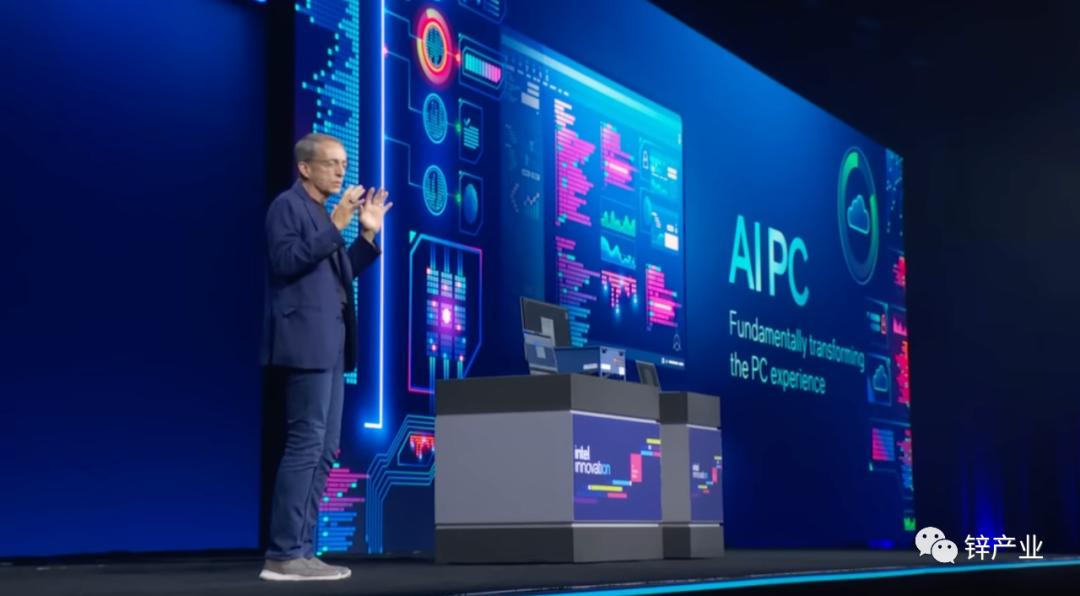
Gelsinger stated, 'We believe artificial intelligence is now ushering in the next PC era—the AI PC era.'
Having missed the mobile internet era and fallen behind in the early stages of artificial intelligence, Intel is now pinning its hopes for a comeback on AI PCs.
To this end, Pat Gelsinger has publicly unveiled the Meteor Lake processor, restructured the "New Wintel Alliance," and even made a rare joint appearance with AMD's Lisa Su and NVIDIA's Jensen Huang to support Lenovo.
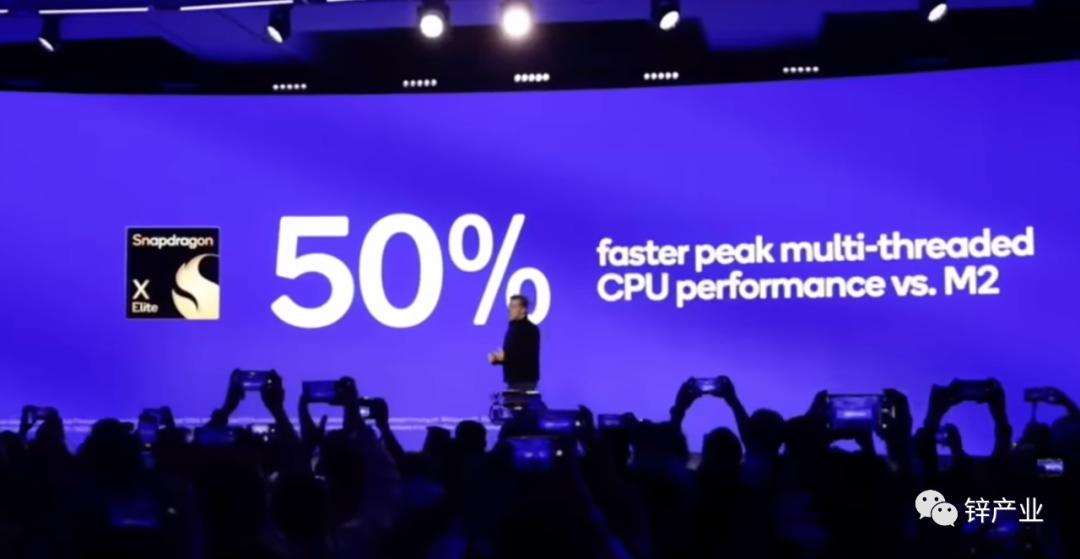
All to seize this opportunity.
October 24, 2023, was a bustling and auspicious day for Lenovo.
On this day, Lenovo moved its Tech World event to Texas, USA, as the company aimed to make a significant impact.
Judging from the announced lineup of speakers, Lenovo invited Microsoft CEO Satya Nadella, NVIDIA CEO Jensen Huang, Intel CEO Pat Gelsinger, AMD CEO Lisa Su, and Qualcomm CEO Cristiano Amon...
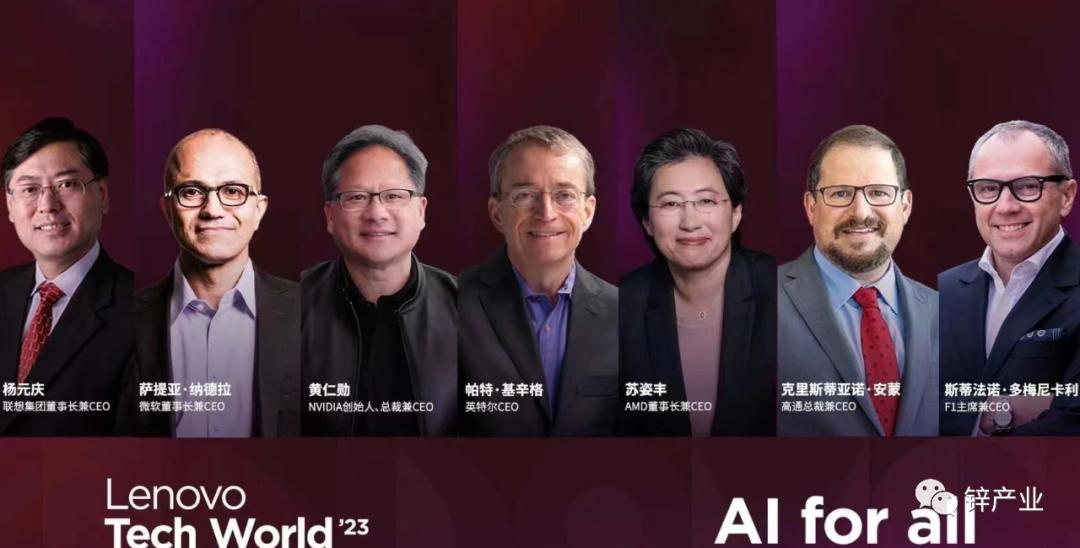
The ability to gather these globally top-tier tech leaders, who often compete in various arenas, is not only due to Lenovo being the world's leading PC manufacturer by shipment volume but also because of a more critical reason:
At this transitional moment between technological eras, these industry leaders all have their own plans in the AI PC domain.
Among them, Qualcomm stands out as the most typical example.
Strictly speaking, Amon didn't attend Lenovo Tech World 2023 in person (though he made a virtual appearance), because on the same day when Lenovo Tech World 2023 was making headlines, Qualcomm was busy hosting its annual Snapdragon Summit on the beautiful Hawaiian island in the Pacific.
What made this Snapdragon Summit different from previous ones was that Qualcomm not only gathered numerous smartphone manufacturers to promote large AI models on mobile devices, but also prominently unveiled an AI chip specifically designed for PCs—X Elite.
Qualcomm officially claims that this Arm-based PC chip outperforms Apple's M2 by 50%. More importantly, this chip can run AI models with 13 billion parameters.
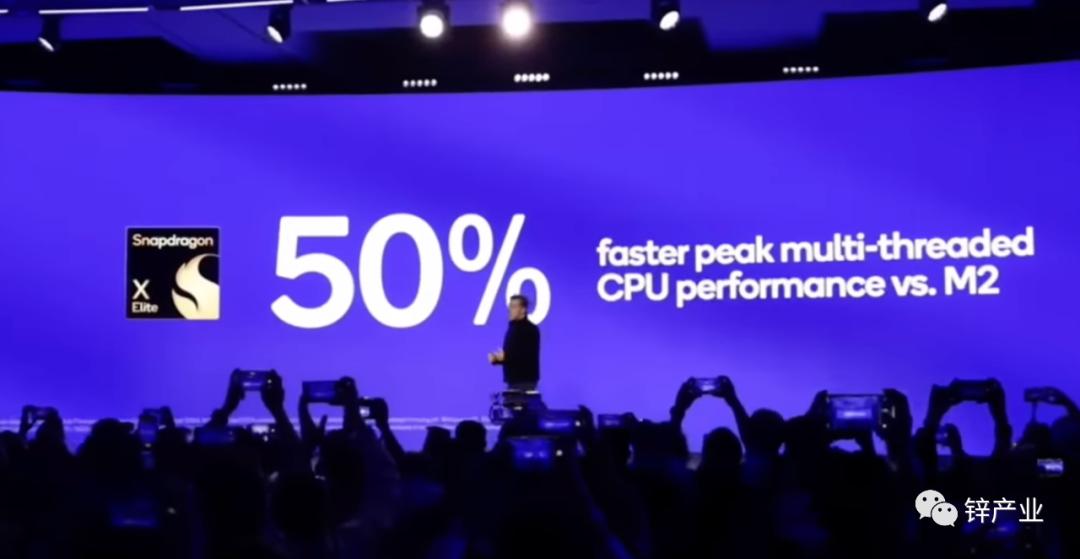
After years away, Qualcomm's return to the PC market aims to seize some market share from Intel and AMD as AI PCs gain momentum.
In response, Qualcomm also "returned the favor" by inviting Lenovo. At the Snapdragon Summit, Zinc Industry witnessed the virtual attendance of Lenovo CEO Yang Yuanqing and Microsoft CEO Satya Nadella (these executives have been exceptionally busy over the past two months).
PCs are Intel's primary revenue source, with related businesses accounting for over 50% of its income. Naturally, Intel is unwilling to let others encroach on this market.
At the Intel Innovation Conference, Pat Gelsinger spent nearly an hour explaining what an AI PC is, Intel's strategic focus, and made an announcement:
Intel will officially release its mobile processors, codenamed Meteor Lake and branded as Core Ultra, on December 14.
These processors are the first consumer-grade PC chips with built-in NPUs, representing Intel's inaugural offering specifically designed for AI PCs.
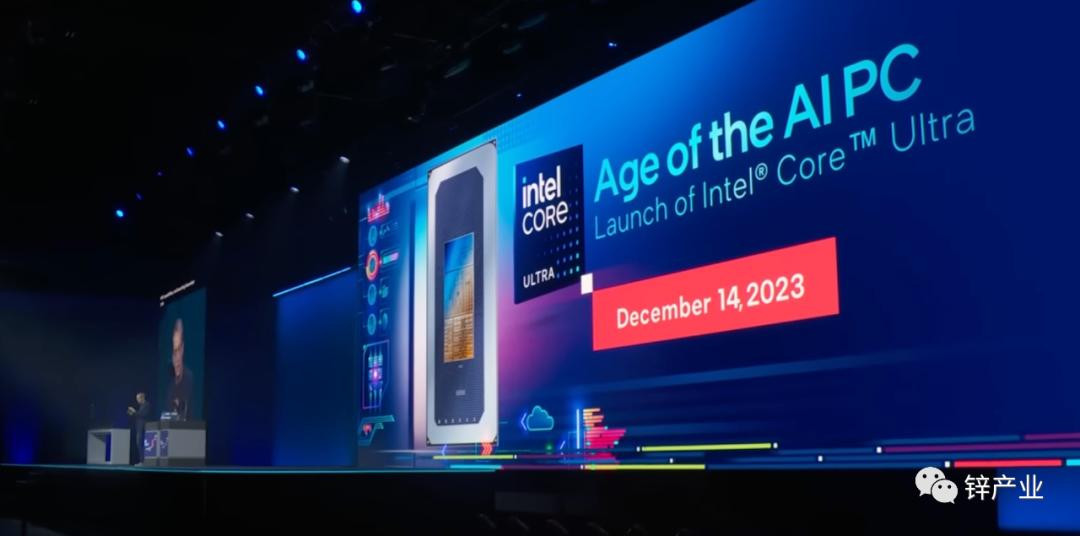
Some might wonder: Shouldn't AI PC definitions come from PC manufacturers?
Not really.
In the early stages of AI PCs, whether a PC qualifies as an AI PC depends on its ability to run large models, and whether it can run large models depends on the computational power of the PC's processor.
IDC's definition of an AI PC in the AI PC Industry (China) White Paper is:
A personalized AI assistant tailored for everyone.
When most ordinary people still struggle to comprehend concepts like "what are large language models" or "what is an AI assistant," such definitions are clearly too ambiguous.
A more straightforward definition should start with computing power. Currently, an AI PC processor needs to possess two key characteristics:
- Must have a dedicated NPU for handling AI workloads;
- Must achieve at least 40 TOPS of computing power.
Qualcomm's NPU-equipped X Elite delivers computing power of up to 45TOPS, while AMD's NPU-equipped Ryzen 8040 also reaches 39TOPS.
Like large models, the first generation of AI PCs is destined to be a product accelerated by high computing power.
In August 2016, just eight months after OpenAI was founded, Jensen Huang traveled all the way to OpenAI's office in San Francisco with Nvidia's first AI supercomputer.
The purpose of the trip was to donate this supercomputer to the OpenAI team, with Elon Musk, then chairman of OpenAI, as the recipient.
At GTC 2023 in March, Jensen Huang played a video on stage showcasing NVIDIA's donation of a supercomputer to OpenAI.
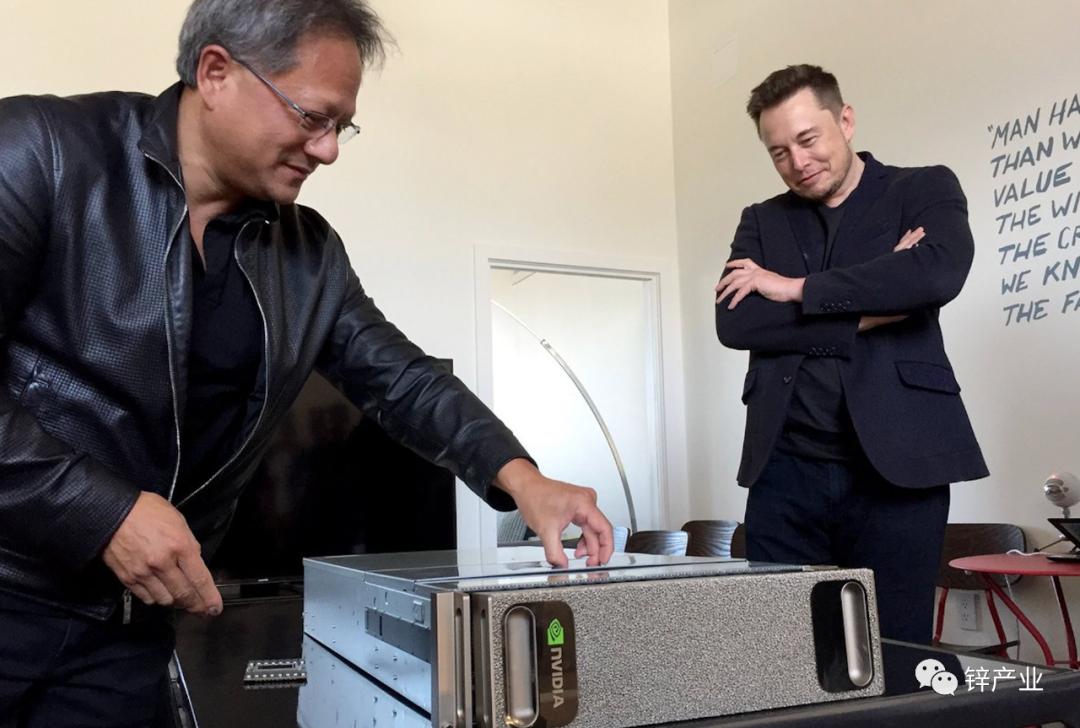
In a way, the humble yet all-in bet by Huang at that time pinpointed the pulse of an era.
This past event highlights the sharp foresight of Huang, the prophet.
Seven years later, as large AI models became the 'savior' of the tech renaissance, OpenAI became the hot topic, NVIDIA reaped massive profits, Huang in his leather jacket dominated the scene, while Musk stepped back as an observer.
In 2023, the groundbreaking large models that shook the global tech industry must release their energy and create the first ripple in the global economy.
After extensive research, global scientists and tech industry decision-makers have summarized a key term in the commercial world: RAG.
RAG, or Retrieval-Augmented Generation, originated from a 2020 research paper by Patrick Lewis, a researcher at Facebook AI Research (FAIR).
This term aptly captures the essence behind the first wave of commercial large model products, including Microsoft Copilot for Microsoft 365, Google Bard, and DingTalk's Magic Wand.
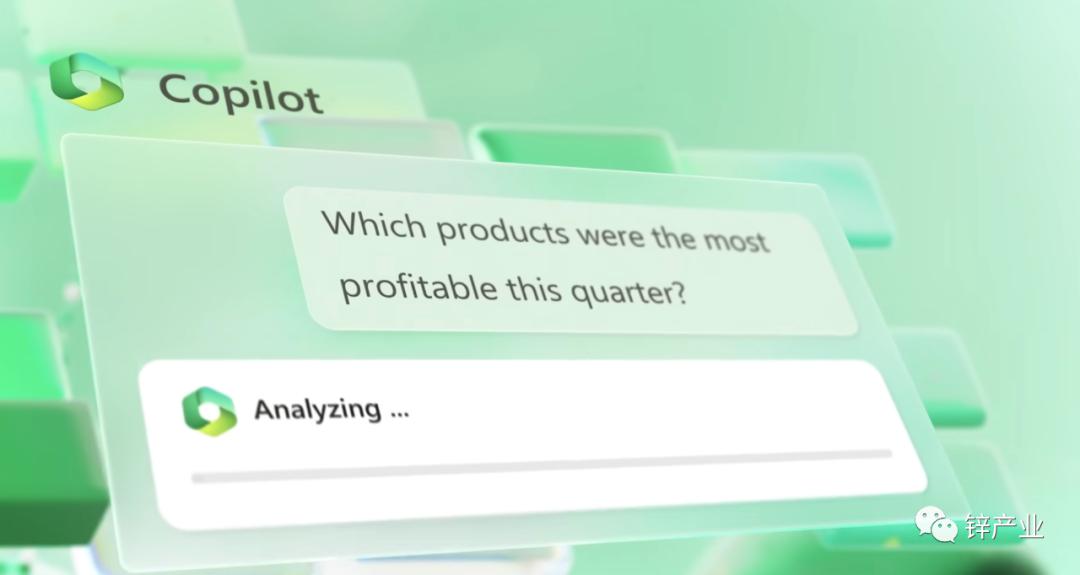
Behind the first wave of commercial large model products lies a battle over search engines and an expansion of the search engine battlefield.
Whether it's the search engine war or the AI-powered upgrades in office software that follow, the long-stagnant PC industry is sensing an opportunity.
At the Intel Innovation Conference this September, Acer CEO Jason Chen took the stage with the first laptop equipped with Intel Core Ultra, strongly emphasizing that 'the era of AI PCs has arrived.'
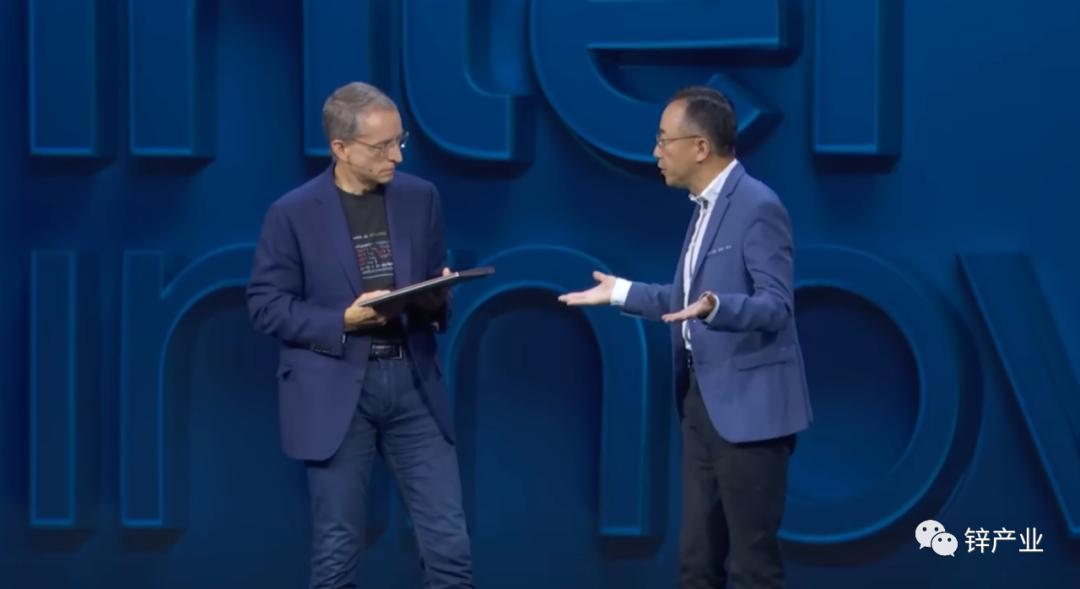
In fact, the MSI Prestige AI EVO, a laptop featuring Intel Core Ultra, began pre-sales in the U.S. in November with a starting price of $1,049 (approximately ¥7,600).
Meanwhile, the first batch of AI PCs equipped with this processor, including Lenovo Xiaoxin Pro AI 2024, ASUS Zenbook 14 2024, HP Spectre x360, and Samsung Galaxy Book 4, are already on their way.
What is the killer app for AI PCs?
"You who create the next generation (AI PC) killer apps are actually the killer apps."
Facing developers from across the country in the audience, Kissinger gave such a tactful answer.
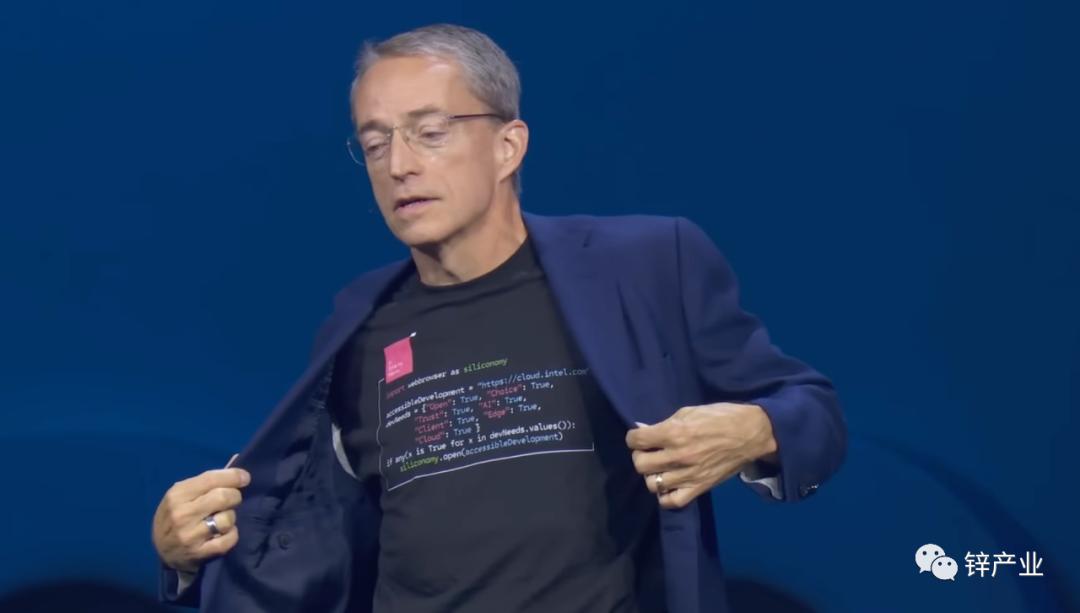
After the second-generation tech giants, who grew up with the PC industry, personally stepped in to promote the trend, 2024 has been officially stamped as the inaugural year of AI PCs, with more AI-powered computers set to be released throughout the year.
However, before the first batch of AI PCs hit the market, no one can definitively say what their killer application will be—not even someone like Pat Gelsinger.
When it comes to AI PCs, what might resonate more deeply is another vision Gelsinger shared about them:
"If we can make ubiquitous large models run on everyone's PC, becoming each individual's personal assistant, that would be something truly cool."
Chip manufacturers and PC vendors are filled with expectations for AI PCs, while industry analysts present even more optimistic forecasts.
IDC's white paper on AI PCs provides the following projection:
By 2027, AI PCs will account for 85% of the Chinese PC market, becoming the mainstream in the PC industry.
In the same white paper, IDC offers another set of more aggressive forecast data:
"China's PC market will end its negative growth trend with the arrival of AI PCs, maintaining stable growth over the next five years."
The combined market size of desktops and laptops is expected to grow from 39 million units in 2023 to over 50 million units by 2027, representing a growth of nearly 28%."
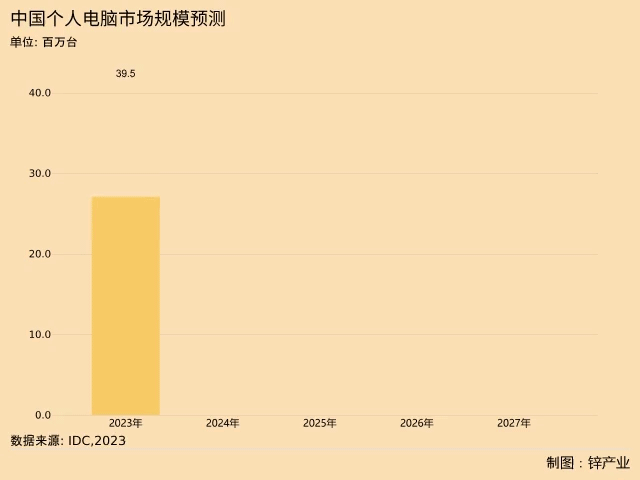
In 2023, the PC industry continues to struggle at the edge of a negative growth cycle, while the global chip sector stumbles through its downturn. Such optimistic projections undoubtedly excite industry leaders who have weathered these challenges.
If the AI PC narrative holds true, both the PC industry and the semiconductor sector are poised to enter an immeasurable new cycle.
The key to unlocking this golden era lies within the spring of 2024.
